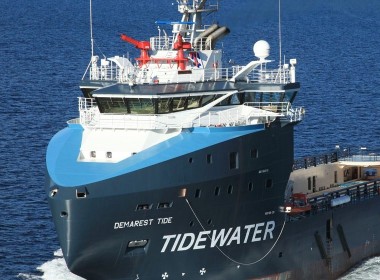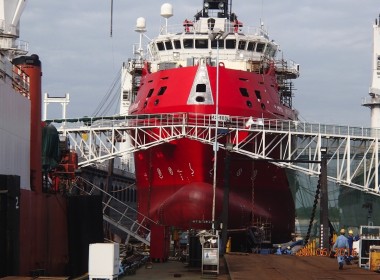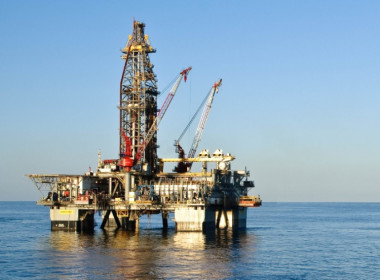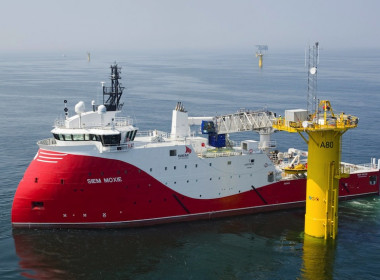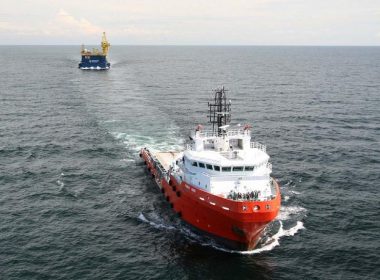COLUMN | Getting results: Valaris; Tidewater; Golden Energy Offshore; Boskalis in Yemen [Offshore Accounts]

Who said that August was a month for relaxing by the beach? No book reviews for your sun lounger this year. Instead, we plunge into the results reporting season and an analysis of some of the recent deals in the offshore sector.
Valaris exercises bargain Korean options
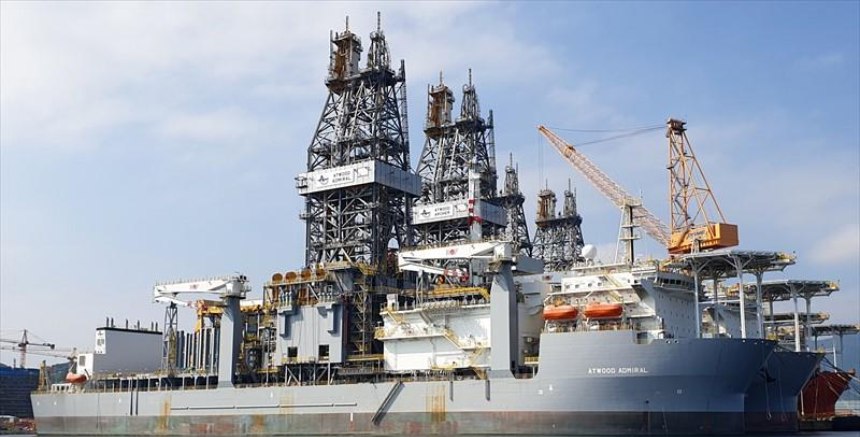
The drillers are in a sweet spot, as deepwater rig rates surge towards US$500,000. Valaris decided to exercise its in the money option on the two drillships it had suspended in Hanwa Ocean (former Daewoo yard) for the best part of a decade, the company announced in its earnings call.
Valaris had until the end of the year to close the purchase on the two high end rigs Valaris DS-13 and Valaris DS-14 for approximately US$119 million and US$218 million, respectively, and the rigs will now be delivered on December 31, 2023. These rigs are the former Atwood Admiral and Atwood Archer, which were ordered by Atwood Oceanics in 2013 and were delayed three years by mutual agreement in the market downturn in 2016. Then, Atwood was purchased by Ensco in 2017, and then Ensco, renamed Valaris, went into Chapter Eleven in 2020 and restructured.
Still with me? It’s complicated!
The Korean yard accrued interest on the final, overdue payment, and the company clung tenaciously to its option by delaying the delivery back to 2023. Now the patience of the yard and the patience of Valaris have finally paid off.
Valaris will fund the acquisition of the rigs by issuing US$350 million in 8.375 per cent senior secured second-lien notes due in 2030. This is rather odd, as the company has US$800 million of cash on its balance sheet, but as we shall see, taking cash out of the company for the shareholders is the management’s main focus. The utilisation rate for existing sixth- and seventh-generation drillships has now averaged over 90 per cent for the past 12 months, but Valaris’ own drillship utilisation was 78 per cent for the quarter.
The CEO of Valaris, Anton Dibowitz, whom readers might remember was formerly the CEO of Seadrill, commented that he had recently visited the yard himself, and was confident of the business case.
“They are the only remaining drillships available at the South Korean shipyards with two Blow Out Preventers (BOP),” said Mr Dibowitz, “and we estimate that it would cost approximately US$50 million to add a second BOP to a ship that is only equipped with one.”
Valaris still lost money
Valaris’ results, however, continue to demonstrate the toxic legacy of long-term contracts at low rates, as the company reported a net loss of US$27 million for the quarter ending June 30, compared to a net income of US$49 million in the first quarter of 2023. Transocean also reported a loss. The drilling industry is recovering but is still burdened by historic contracts at historic rates, even if very good times appear to be returning next year.
Transocean saw that in the most recent quarter ending June 30, its average day rate was approximately US$363,000 per day versus US$312,000 per day in the second quarter of 2022. And based on existing backlog, CEO Jeremy Thigpen said that by the second quarter of 2024, he expects it to be approximately US$433,000 per day.
Whereas Seadrill, Transocean, and Noble Corporation have all been clear that any reactivations of cold-stacked rigs will require the oil company customer to dig deep in its pockets and pay all the costs upfront plus a hefty day rate, Valaris has been more vague. In addition to the uncontracted newbuilds in Korea, Valaris still has two deepwater semi-subs and one remaining deepwater drillship (Valaris DS-11) stacked.
That comes after a flurry of contract awards that have seen two of Valaris’ cold-stacked fleet contracted for service. The company announced a new three-year contract with Petrobras in March for the drillship Valaris DS-8 and said it would reactivate the rig from cold stack for that contract. The total contract value is approximately US$500 million, including a US$30 million mobilisation fee.
Hint: US$30 million does not cover the cost of reactivating the drillship and sending it to Rio de Janeiro, which will take more than six months to complete, with mobilisation to Brazil at the end of the year.
With the announcement on July 31 that it would reactivate the drillship Valaris DS-7 for a 12-well contract with an unnamed client off West Africa starting in the second quart of next year, the company has only one drillship remaining in stack: DS-11. Again, however, with the DS-7 contract award, Valaris seems to be bidding below the rates achieved by its competitors, even excluding the cost of up to US$100 million required to reactivate the drillship. The day rate over 850 days is roughly US$428,000 but that excludes the large reactivation costs, so the net rate over the roughly two and a half years will likely be closer to US$310,000.
Trying to squeeze a bargain deal out of Valaris on the newbuilds may be the logic behind TotalEnergies’ decision to issue tenders for two deepwater rigs for ten year contracts in West Africa.
Why is Valaris lowballing?
It is hard to avoid the conclusion that Valaris is being driven with the handbrake on. The company is more focused on using its own free cash flow to buy back its shares, which are mainly held by its former creditors after its 2021 debt for equity restructuring under bankruptcy protection. The company relisted in 2022 and has been criticised for its “bond holder mindset” of taking minimum risk.
At the same time that it announced the DS-7 contract, Valaris also announced that it was increasing its 2023 share repurchase target from US$150 million to US$200 million and that it had already spent US$65 million repurchasing its shares up to June 30, 2023 and had spent US$94 million in total since its relisting.
Stock re-purchases benefit one group, especially: the Valaris senior management, who receive over US$6 million of share-based compensation every 90 days. Buybacks automatically increase the earnings per share of the company by reducing the denominator. The Transocean share price has more than doubled in the last year, whilst Valaris’ is up by a mere 49 per cent.
In this rising market, Valaris definitely looks the laggard.
Tidewater delivers… a bit
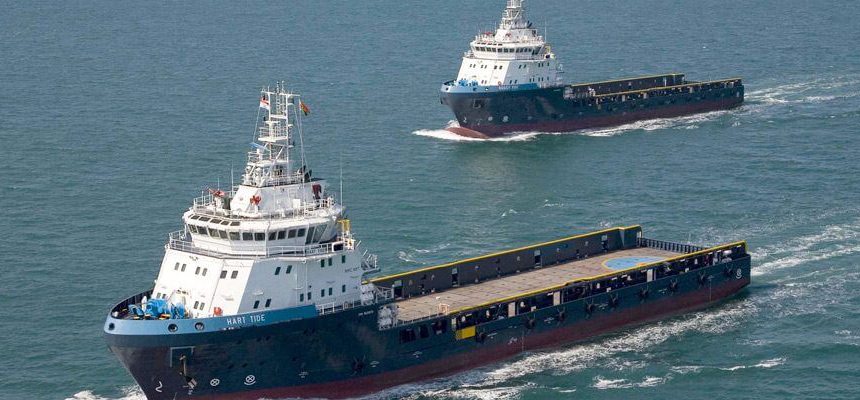
One company that nobody can accuse of laggardness is Tidewater, the undisputed leader in the offshore supply vessel segment, with a fleet of 223 vessels at the time of writing, after the acquisition of 37 platform supply vessels (PSVs) from Solstad Offshore in a deal that closed on July 5. Tidewater reported a profit of US$22 million for the quarter ended June 30, when it operated 186 ships, reversing a loss of US$25 million a year ago.
Tidewater’s general and administrative costs of US$26 million were lower in the quarter than the quarter a year before, showing the company’s ruthless cost-cutting efforts after the acquisition of Swire Pacific Offshore in 2022, even though it incurred US$2.5 million in professional fees on financing options for the Solstad PSVs, which were ultimately not taken.
Net margins (revenue divided by net income) are still only 10 per cent, so there is clearly a lot of upside potential if the company can execute properly. That’s the big “if” that the US$3 billion market capitalisation company must overcome. Execution has so far been flawless, but US$22 million from 183 working vessels (Three were stacked.) is not a lot of profit, just US$1321 per vessel per day, compared to US$1,898 per day in the last boom in 2013 (here).
In the current market, Tidewater has the potential to take margins much higher, if it executes well.
Handing value to Go
One bizarre announcement from Australia-based Go Offshore was the news that it would be bareboating Tidewater’s Hart Tide, an MMC 887 design, DP2 PSV with over 900 square metres of clear deck space. Australia has historically been one of the highest margin supply vessel markets in the world, with highly paid, unionised crew that afford owners the opportunity to charge some of the highest charter rates, on top of some of the highest costs and strictest environmental standards. Now it seems that Tidewater has squeezed its cost base so much that it is reliant on a third-party operator to market and manage one of its highest-specification ships in Australia, thus handing considerable margin to Go.
Can a company be too lean, or does Tidewater no longer consider Australia to have any meaningful value as a market in the long term?
Middle Eastern sinkhole?
However, the results show that, like Valaris, Tidewater is still burdened with a lot of legacy contracts at low rates, and that some geographical sectors of the world remain mired in a low-rate mentality, dominated by state oil companies. Valaris reported that its ARO joint venture, which operates jack up rigs in Saudi Arabia in conjunction with its client and joint venture partner Saudi Aramco, lost money in the second quarter – again.
Tidewater reported that whilst its 65 vessels working in West Africa made US$25 million in vessel operating profit in the quarter, the 44 Tidewater vessels working in the Middle East lost just under US$1.7 million in the same period, just as they had in 2022, and just as they did in the first quarter of this year, even though the average day rate increased to US$10,449 from end March quarter to end June quarter. It looks like another US$500 per day rate increase on every working boat in the region, or an improvement in utilisation, is needed to bring the unit to break even. Tidewater has US$200 million of assets in that market and a fifth of its fleet, so it needs results there.
This poor performance from both Tidewater and Valaris suggests that the Middle Eastern market is something of a sinkhole, where high operating costs due to client requirements meet unattractive contract terms.
ADNOC wins big… with itself
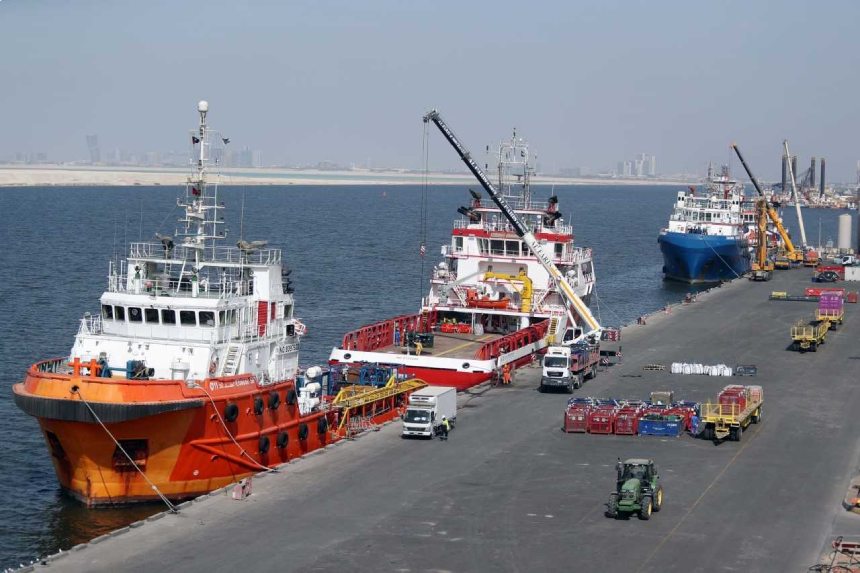
Of course, this is not a problem for ADNOC Logistics and Services, the state-owned quasi-monopolist in Abu Dhabi, which reported profits of US$306 million for the first half of the year. Peculiarly, ADNOC Logistics and Services delivered a positive free cash flow of only US$82 million in the first half of 2023. I don’t know why (Feel free to write in and tell us.). However, I trust free cash flow numbers as a measure of a business’ health, far more than other metrics.
As we have highlighted before, the Arabian Gulf is increasingly a market where state-owned enterprises mop up the cream contracts in drilling and marine services, and leave only the crumbs for the private sector and foreign players.
Mexican muddle costs money
And it’s not just in the Middle East. Page 19 of the Tidewater results features this beauty:
“In the second quarter of 2022, we agreed to a transaction with PEMEX, the Mexican national oil company, to exchange US$8.6 million in accounts receivable for an equal face amount of seven-year 8.75 per cent PEMEX corporate bonds (PEMEX Note). The PEMEX Note is classified as ‘available for sale.’ For the three and six months ended June 30, 2023, we recorded US$0.2 million and US$0.3 million in mark-to-market losses in other comprehensive income, respectively, valuing the PEMEX Note at US$7.8 million in our consolidated balance sheet as of June 30, 2023.”
So, Pemex doesn’t pay you, because it is a badly run state oil company operated on a non-commercial basis. Instead of cash, it you offers you its own corporate bonds. And guess what? The bonds fall in price. Who would have guessed? Really?
Borr Drilling reports its half-yearly results later this week, so we can expect further updates on its travails in Mexico then…
More bad timing from Swire Pacific
We were vocal critics of Swire Pacific when it sold its fleet of 50 anchor handlers and PSVs to Tidewater for a mere US$190 million in March 2022, just as oil prices spiked over US$100 per barrel and the offshore market cycle decisively turned. Us negative Monday morning quarterbacks laughed at the pitiful price for which the company had sold its fleet of modern and capable offshore vessels.
Now, the Tidewater results contain yet more evidence of the Hong Kong-based conglomerate’s complete inability to time the offshore market. Swire Pacific Offshore was sold for US$42 million in cash and 8,100,000 warrants to buy Tidewater stock at the princely sum of US$0.001 per share. These warrants were valued at US$148 million in March 2022, when the deal was announced. Tucked away in the latest Tidewater results filing is a choice gem:
“In 2022, we completed two public offerings of approximately 8.1 million shares combined of our common stock and, coupled with a small redemption of SPO acquisition warrants related to indemnified liabilities, redeemed 100 per cent of the outstanding SPO acquisition warrants. All of the net proceeds from the public equity offerings were used to redeem SPO acquisition warrants.”
The first of these public offerings was on August 9, 2022, when the Tidewater stock traded at around US$21. The second offering was on November 8, when it stood at around US$30. At close on Friday, Tidewater shares stood at US$63.29.
US$300 million on the table?
So, back of the envelope calculations suggest that Swire Pacific achieved US$206 million by selling the warrants they acquired for US$148 million. Nice. However, if the Hong Kong-based sellers had held the warrants up until today rather than selling them all last year, they would now be worth US$510 million. That’s another US$300 million left on the table, if we read the Tidewater filing correctly.
What’s US$300 million to the Swire Group, you might ask? The coming property crisis in China may tell us. Whereas Tidewater shares have tripled in value over the last year, shares of Swire Properties have marginally fallen.
Of course, those who believe that property in Hong Kong and China will grossly outperform the offshore sector in the coming five years are most welcome to their choices.
However, we won’t be taking a punt on Swire Properties any time soon, nor will we be joining the company and the Hong Kong Department of Home Affairs in celebrating the “Summer Festival” later this month (included on page 10 of the Swire Properties results), a three-day celebration of the territory’s untrammeled joy and freedom of spirit at Quarryside, part of the Hong Kong government’s completely unironic, totally non-Orwellian, Happy Hong Kong programme.
Our apologies to those readers who suffered nausea after clicking on the link.
Golden Energy and ING Bank
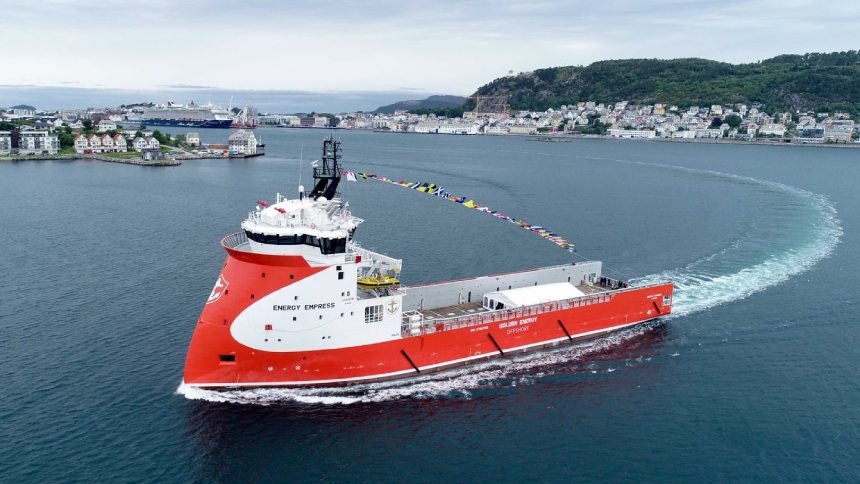
The deal for Oaktree and Golden Energy Offshore to purchase four PX121 design PSVs and one small subsea vessel from troubled Dutch operator Vroon Offshore Services has a backstory. We thought the price of US$94 million was low, valuing each PX121 at just US$20.5 million.
The seller was ING Bank, which sold the ships through its restructuring special situations department, not its shipping division. Again, a haste to sell, and what was described to us as a badly managed process left money on the table for the sellers.
Honestly, as we have seen at Valaris, banks and lenders running ships or rigs is a recipe for disaster. The sooner these people leave the game, the better for rational market behaviour.
The winning bidder for the remainder of the Vroon Offshore Services fleet of 34 vessels is expected to be announced at the end of the month. We’ll report when the winner is announced.
Finally, some good news
One company that has delivered genuinely outstanding results is SMIT Salvage, part of Boskalis, offshore Yemen.
On Friday last week, the company announced that it had completed the discharge of over one million barrels of oxidising crude oil from the decaying floating storage and offloading (FSO) vessel Safer. The cargo – which had been onboard for the better part of a decade, and is worth nominally US$88 million, less a discount for its likely degradation onboard – was transferred safely and successfully to the United Nations-owned tanker Yemen. The oil will be sold to support the costs of the operation.
Now the 47-year-old FSO hull needs to be disconnected from its moorings and safely towed away for scrap by SMIT Salvage. That won’t necessarily be easy, but the risk of a massive oil spill in the Red Sea is now averted. It’s good news for Yemen and its maritime neighbours.
Additionally, five United Nations security workers who were kidnapped in Yemen by al-Qaeda militants 18 months ago have just been released, the United Nations said on Friday, and at the start of this month, Saudi Arabia announced it would grant US$1.2 billion in aid to the government of Yemen (the Yemeni government it supports, not the Houthis, who occupy the capital, Sanaa).
But the conflict rumbles on, and millions of Yemenis continue to suffer.
Background Reading
Specifications of Valaris DS-13 are here and of Valaris DS-14 are here.
See here for past coverage of the shocking restructuring of Go Offshore, which left the Australian taxpayer on the hook for over AU$50 million (US$33 million) when the company went into administration in 2017. It was later rescued by a new owner, on a third party, arm’s length basis – an owner apparently completely unrelated to the previous one.
If you missed the full Tidewater filing in the text above, click here.


